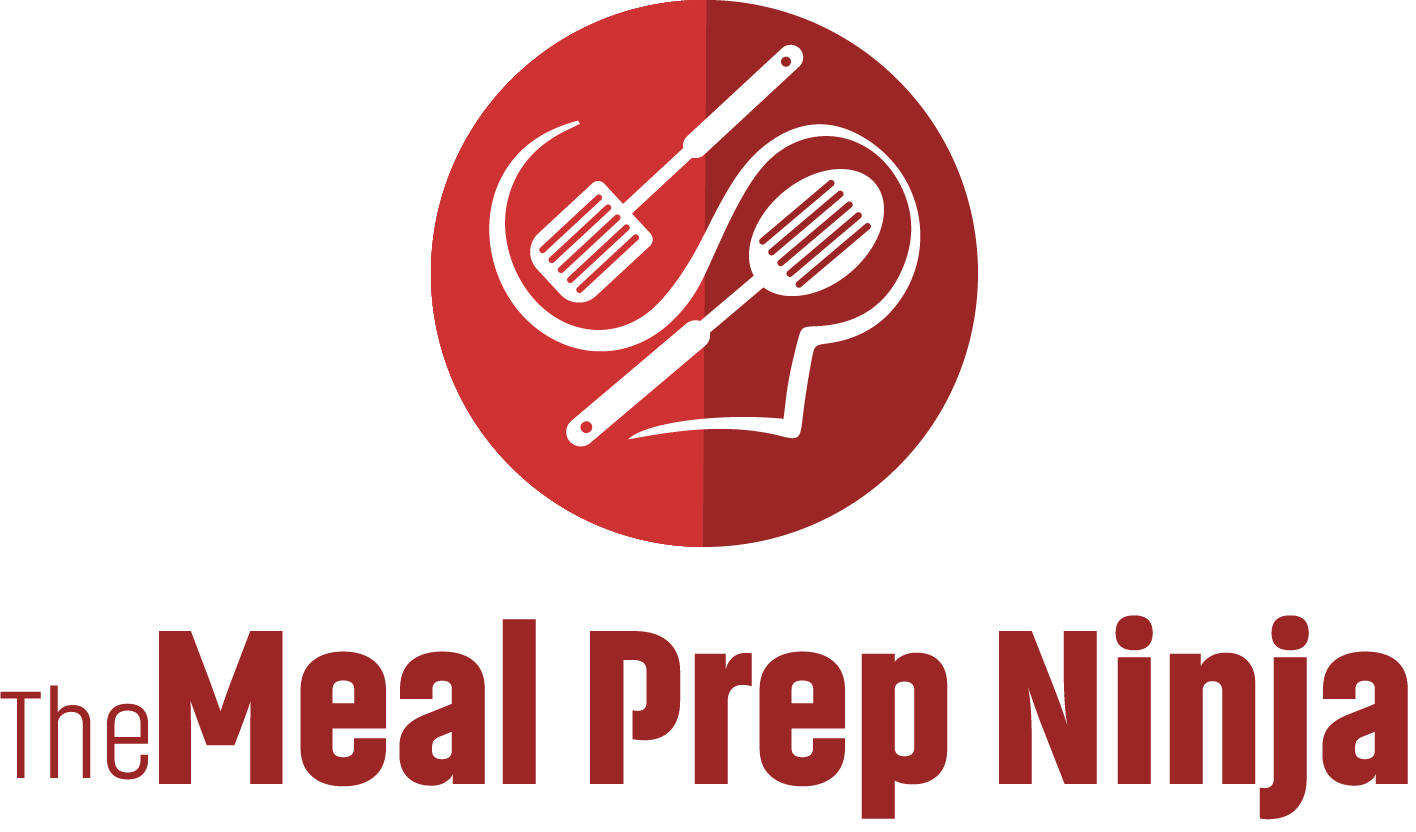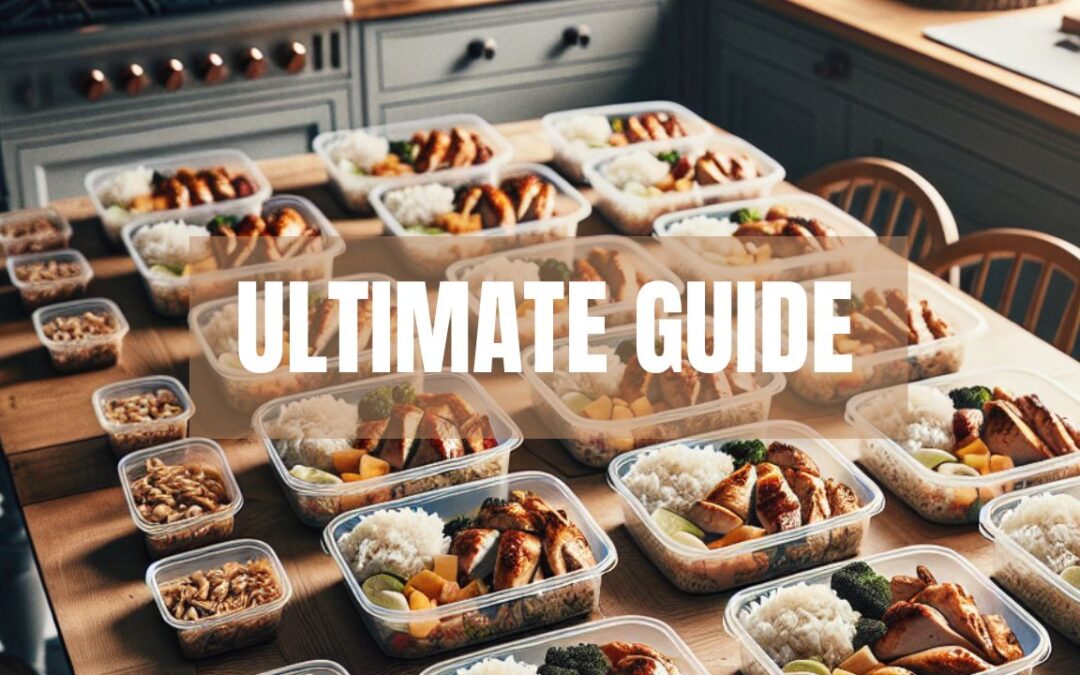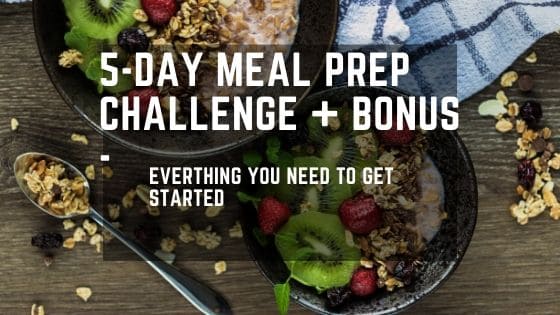Last Updated on March 10, 2024 by TheMealPrepNinja
Are you tired of constantly struggling to find time to cook healthy meals? Do you want to save money and eat nutritious food without spending hours in the kitchen every day?
If so, meal prep is the solution you’ve been looking for. In this comprehensive guide, I will provide you with all the information and tips you need to easily get started with meal prep. Whether you’re a beginner or just looking to streamline your cooking routine, this guide will cover everything from the basics of meal prepping to creating a weekly meal prep strategy, optimizing your kitchen, establishing healthy eating habits, and much more.
Get ready to transform your relationship with food and discover the incredible benefits of easy meal prepping!
This post may contain affiliate links, which means we may receive a commission, at no extra cost to you, if you purchase through a link.
Key Takeaways:
- Meal prep is a game-changer for saving time and simplifying your cooking routine.
- By planning and preparing meals in advance, you can ensure you always have nutritious options available.
- Creating a weekly meal prep strategy and optimizing your kitchen can make the process even more efficient.
- Meal prep is not only beneficial for your health but also for your budget.
- With the right tips and techniques, even beginners can easily incorporate meal prep into their lifestyle.
Understanding the Basics of Meal Prep for Beginners
In this section, I will explain what meal prepping is and its benefits. Meal prepping involves preparing meals and portioning them out in advance for later consumption. It offers several advantages, including saving time, money, and promoting better health. By planning and cooking meals ahead of time, you can simplify your cooking routine and have nutritious meals readily available.
What is Meal Prepping?
Meal prepping is the practice of planning and preparing meals in advance. It involves cooking and portioning out meals for the week or a few days at a time. This can include preparing individual ingredients, such as chopping vegetables or marinating meats, or fully cooking and assembling meals that can be reheated or eaten cold later.
Meal prepping allows you to have ready-to-eat meals on hand, reducing the need for daily cooking and ensuring that you always have a healthy option available.
The Benefits of Meal Prep: Time, Budget, and Health
Meal prep offers numerous benefits, making it an ideal option for beginners looking to streamline their meal planning and preparation. Here are some of the key benefits:
- Time-saving benefits: By dedicating a specific block of time to prepare meals, you can save time during busy weekdays when cooking may seem like a daunting task. With meals already prepared, you can simply reheat and enjoy.
- Budget-friendly meals: Meal prepping allows you to plan your meals in advance, helping you make a conscious effort to stick to a budget. By buying ingredients in bulk and avoiding unnecessary impulse purchases, you can save money on groceries.
- Health benefits: When you meal prep, you have control over the ingredients you use, allowing you to make healthier choices. By planning and cooking your meals in advance, you can ensure that they are well-balanced, packed with nutrients, and tailored to your specific dietary needs.
Now that we’ve explored the basics of meal prep and its benefits, let’s delve into how beginners can get started with meal prepping in Section 3.
Meal Prep for Beginners: Getting Started
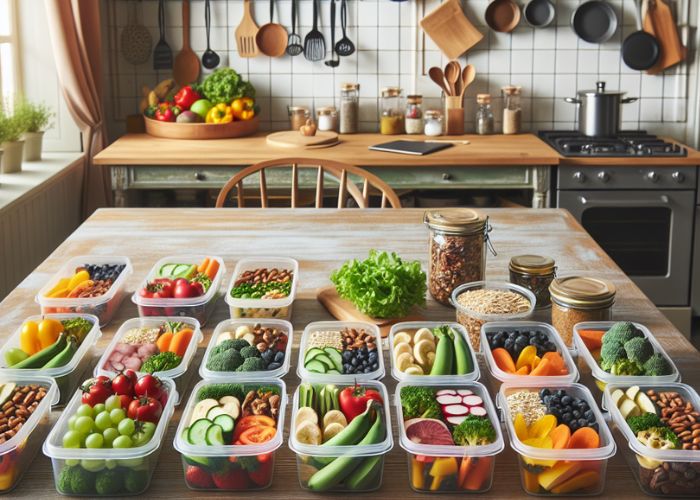
If you’re new to meal prep and wondering how to get started, you’re in the right place. In this section, I will provide you with step-by-step instructions, tips, and suggestions to help you kickstart your meal prep journey. By following these beginner meal prep tips, you’ll be well on your way to saving time, eating healthier, and enjoying the convenience of pre-prepared meals.
1. Plan Your Meals
The first step in successful meal prep is planning your meals. Take some time to decide what meals you want to prepare for the week ahead. Consider your dietary preferences, nutritional needs, and any specific goals you have, such as weight loss or muscle gain. Write down your meal ideas and create a menu for the week.
2. Make a Shopping List
Once you have your meal plan, make a shopping list of all the ingredients you’ll need. This will help you stay organized and ensure that you have everything you need on hand. Check your pantry and fridge to see if you already have some ingredients and only add the ones you need to the list.
3. Set Aside Time for Prep
Allocate a specific time each week for your meal prep session. This could be on a Sunday afternoon or any other day that works best for you. By designating a specific time for prep, you’ll be more likely to stick to your plan and avoid last-minute stress.
4. Organize Your Kitchen
A well-organized kitchen is key to efficient meal prep. Take some time to declutter your pantry and fridge, ensuring that everything is easily accessible. Invest in meal prep containers to store your pre-prepared meals and keep them organized in your fridge or freezer.
5. Choose Simple Recipes
As a beginner, it’s best to start with simple recipes that require minimal preparation and cooking time. Look for recipes that use common ingredients and require basic cooking techniques. This will help build your confidence and make your meal prep experience more enjoyable.
6. Start Small and Gradually Increase
Don’t feel overwhelmed by trying to prep all your meals for the entire week in one go. Start small by prepping a few meals or snacks at a time. As you become more comfortable with the process, you can gradually increase the number of meals you prep. Also, keep your meal prep recipes simple.
7. Get Creative and Have Fun
Meal prep doesn’t have to be boring or monotonous. Get creative with your recipes, flavors, and ingredients. Experiment with different cuisines, spices, and cooking techniques. Enjoy the process and have fun with your meal prep journey.
By following these beginner meal prep tips, you’ll be well on your way to mastering the art of meal prep. With a little planning, organization, and creativity, you can save time, eat healthier, and simplify your cooking routine.
Essential Meal Prepping Tips for Beginners
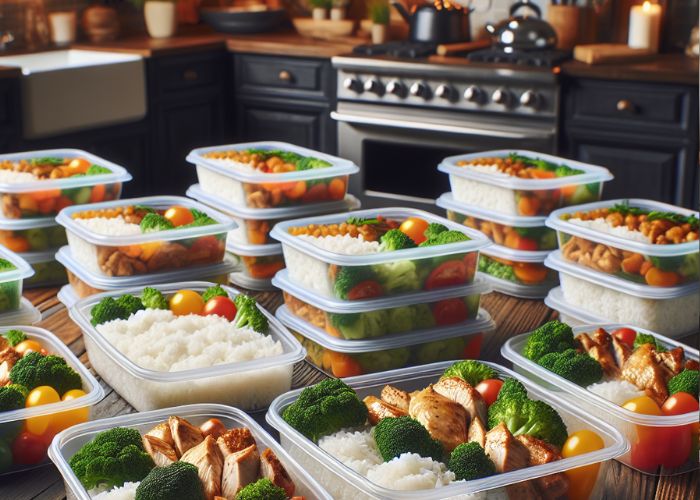
When it comes to meal prep, there are a few essential tips and techniques that can help beginners get started on the right track. By following these guidelines, you can save time, reduce stress, and ensure that your meals are delicious and nutritious. Here are some key tips to keep in mind:
Simple Cooking Techniques and Ingredient Selection
One of the secrets to successful meal prep is to focus on simple cooking techniques and ingredient selection. Here are a few techniques that can make your meal prep easier:
- Batch Cooking: Prepare large quantities of staple ingredients or dishes that can be used in multiple meals throughout the week. This saves time and allows you to mix and match ingredients for variety.
- Use Versatile Ingredients: Look for ingredients that can be used in multiple recipes, such as grains, proteins, and vegetables. This way, you can create different meals without needing a large variety of ingredients.
- Prep in Bulk: Cut and chop vegetables in bulk, cook grains and proteins in larger quantities, and portion them out for individual meals. This minimizes prep time on a daily basis and ensures that you have everything ready to go.
- Master Basic Cooking Techniques: Learn a few basic cooking techniques, such as roasting, sautéing, and steaming. These techniques can be applied to a wide range of ingredients and recipes.
Easy Meal Prep Recipes to Begin With
If you’re just starting out with meal prep, it’s helpful to begin with some easy recipes that can be prepared in advance and enjoyed throughout the week. Here are a few ideas to get you started:
- Sheet Pan Chicken and Vegetables: Toss chicken breast, mixed vegetables, and your favorite seasonings on a sheet pan. Roast in the oven until cooked through. Portion out for a quick and healthy meal.
- Mason Jar Salads: Layer your favorite salad ingredients in a mason jar, starting with dressing at the bottom and ending with leafy greens on top. When you’re ready to eat, simply shake and enjoy.
- Quinoa Stir-Fry: Cook a large batch of quinoa and stir-fry it with your choice of vegetables, protein, and sauce. Divide into individual containers for a delicious and nutritious meal.
- Oven-Baked Omelette Cups: Beat eggs with your favorite mix-ins, such as diced vegetables, cooked bacon, and cheese. Pour into a greased muffin tin and bake until set. These individual omelette cups are perfect for breakfast on the go.
| Recipe | Prep Time | Cook Time |
|---|---|---|
| Sheet Pan Chicken and Vegetables | 15 minutes | 25 minutes |
| Mason Jar Salads | 15 minutes | – |
| Quinoa Stir-Fry | 10 minutes | 20 minutes |
| Oven-Baked Omelette Cups | 10 minutes | 20 minutes |
Here are a few other recipes to consider:
Healthy Slow Cooker Chicken Parmesan Meal Prep
Healthy Chicken Chili Slow Cooker Recipe
Crock Pot Taco Casserole Pasta Recipe
Creating Your Weekly Meal Prep Strategy
In order to make meal prep an efficient and effective practice, it’s important to create a weekly meal prep strategy that works for you. By taking the time to plan, schedule, and organize your meals for the week, you can save time, reduce stress, and ensure that you have nutritious meals readily available.
Start by dedicating some time each week to meal planning. This involves deciding what meals you want to prepare ahead of time and creating a shopping list based on those recipes. Consider your dietary preferences, nutritional needs, and any special occasions or events that may influence your meal choices.
Once you have your meal plan and shopping list, it’s time to create a schedule for your meal prep. Determine how many days in advance you want to prep your meals and set aside specific blocks of time in your schedule for cooking and preparation. This will help you stay organized and ensure that you have enough time to complete all of your meal prep tasks.
When organizing your meals for the week, consider the order in which you will prepare them. Start with recipes that require the longest cooking times or can be stored in the freezer for later use. Then, work your way through the rest of the recipes based on their complexity and the ingredients they share. This will help streamline your meal prep process and make it more efficient.
As you create your weekly meal prep strategy, don’t forget to consider your storage options. Invest in high-quality meal prep containers that are microwave, dishwasher, and freezer safe. This will make it easy to store and reheat your prepped meals throughout the week.
By creating a well-thought-out weekly meal prep strategy, you can save time, reduce food waste, and ensure that you have healthy and delicious meals at your fingertips. Stay consistent with your planning and preparation, and you’ll soon discover the many benefits that meal prep can offer. Here are some meal prep ideas for beginners.
Efficient Grocery Shopping List for Meal Prep
When it comes to successful meal prep, efficient grocery shopping is key. By planning your shopping list ahead of time and focusing on healthy and budget-friendly ingredients, you can make the most out of your meal prep experience.
| Preview | Product | Price | |
|---|---|---|---|

|
90 Sheets Fastcheck Grocery List Magnet Pad, 110 Printed Common Food for Fridge and Blank Grocery... |
$8.99 |
Buy on Amazon |
What to Buy for Healthy Meal Prep

Stocking up on the right ingredients is essential for creating nutritious and delicious meals. Here’s a list of healthy meal prep ingredients to include on your grocery shopping list:
- Lean proteins: Chicken breasts, turkey, fish, tofu, beans
- Whole grains: Brown rice, quinoa, whole wheat pasta, oats
- Fruits and vegetables: Leafy greens, berries, broccoli, carrots
- Healthy fats: Avocado, nuts, seeds, olive oil
- Low-fat dairy or dairy alternatives: Greek yogurt, almond milk
- Herbs and spices: Garlic, basil, oregano, cumin
By incorporating these ingredients into your meal prep, you’ll ensure a well-balanced and nutritious diet.
Budget-Friendly Meals: Planning and Purchasing
Meal prep doesn’t have to break the bank. With some strategic planning and smart purchasing decisions, you can enjoy budget-friendly meals without compromising on taste or nutrition. Here are some tips for creating budget-friendly meal prep:
- Stick to seasonal produce and sales: Purchase fruits and vegetables that are in season and look for discounts and promotions to save money.
- Buy in bulk: Purchase staple ingredients like grains and legumes in bulk to save money in the long run.
- Opt for frozen fruits and vegetables: Frozen produce is often more affordable and can be just as nutritious as fresh options.
- Plan meals based on what you already have: Take stock of the ingredients you already have in your pantry and fridge and build your meal plan around those items to reduce waste and save money.
By implementing these strategies, you can create delicious and budget-friendly meals that support your meal prep goals. You can also meal prep for one or meal prep for a family.
Optimizing Your Kitchen for Meal Prepping
When it comes to meal prepping, having an organized and efficient kitchen is key. By optimizing your kitchen space and equipping yourself with the right tools, you can make the meal prep process smoother and more enjoyable. Here are some tips to help you optimize your kitchen for meal prepping:
- Organize your pantry: Clear out any expired or unnecessary items and arrange your pantry in a way that makes it easy to find ingredients. Use clear containers or labeled jars to store commonly used items like grains, spices, and dry goods. This will not only save you time during meal prep but also help you keep track of your food inventory.
- Maximize your fridge space: Ensure that your fridge is clean and clutter-free. Use clear storage bins or stackable containers to organize your fruits, vegetables, and meal prep ingredients. This will not only help you see what you have at a glance but also create more space for other items.
- Opt for freezer-friendly containers: Invest in high-quality freezer-safe containers that are leak-proof and stackable. This will help preserve the freshness and quality of your prepped meals, and make it easier to organize your freezer.
- Equip yourself with essential meal prep tools: Having the right tools can make a world of difference in your meal prep routine. Invest in items such as sharp knives, cutting boards, measuring spoons, and a variety of storage containers. These tools will not only make your prep work more efficient but also ensure that your meals are cooked and stored properly.
By optimizing your kitchen and having the necessary tools at your disposal, you can streamline your meal prep process and achieve greater success in your culinary endeavors. Remember, an organized kitchen is the foundation for efficient meal prepping!
Establishing Healthy Eating Basics with Meal Prep
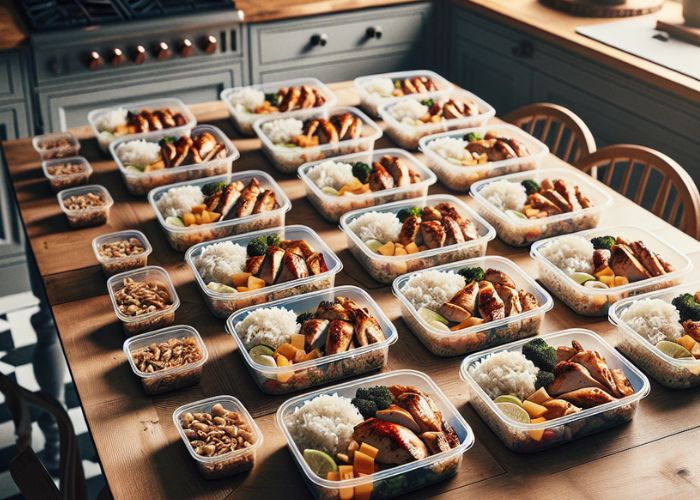
When it comes to maintaining a healthy lifestyle, meal prep is a valuable tool for beginners. By preparing your meals in advance, you can establish healthy eating habits, ensure balanced meals, and incorporate nutritious ingredients.
Creating balanced meals is key to nourishing your body with essential nutrients. Include a variety of food groups in each meal, such as lean proteins, whole grains, fruits, and vegetables. By incorporating these components, you can create satisfying and well-rounded meals that support your overall health.
Portion control is another important aspect of healthy eating. By pre-portioning your meals during the meal prep process, you can avoid overeating and promote mindful eating habits. This helps in managing calorie intake and ensures you’re consuming the right amount of nutrients.
Additionally, meal prep allows you to prioritize nutritious ingredients. By choosing whole foods, such as fresh fruits and vegetables, lean proteins, and healthy fats, you can fuel your body with essential nutrients and minimize the consumption of processed foods that may be high in unhealthy additives.
Meal prep is a powerful tool that empowers beginners to take control of their eating habits. It not only saves time and promotes efficiency in the kitchen but also contributes to the development of a sustainable and healthy lifestyle.
Storage Solutions: Meal Prep Containers and Food Safety
To ensure the longevity and freshness of your meal prepped dishes, it is essential to utilize the right meal-prep containers and follow proper food safety techniques. Choosing the appropriate containers for portion control and understanding effective food storage methods are key components of successful meal prep.
Choosing the Right Containers for Portion Control
- Glass Food Storage Containers for Everything! Aside from the obvious fact that JoyFul by JoyJolt glass meal prep containers are healthier for you and your food, you can also go from freezer to oven without breaking, with a variety of shapes and sizes to fit your purpose. What a JoyFul Idea!
- 12 Airtight Food Storage Containers With Lids: Includes Four Rectangle Containers 35oz (8x6in), 21oz (6.75x5in), 12oz (two 4.2x5.5in). 4 Square Containers 27oz (6in), 17.5oz (5.2in), 11oz (two 4.3in). 4 Round Containers 32oz (6.75in). 21oz (5.9in), 13.5oz (two 5.2in). Height ranges from 1.75-2.3 inches.
- All Temp Food Containers: Made from Borosilicate Glass (aka, space shuttle glass), your containers are robust and love extremes! They’re Dishwasher Safe, Oven Safe to 1040DegF and Microwave Safe containers (*NOT THE LIDS). Both lids and containers are fridge safe and Freezer Safe to minus 104DegF
- Airtight Containers For Fresher Food: The airtight silicone seal and secure hinge clips means you can use them for a food container without odors and air, getting in or out! They're also leakproof glass lunch containers so go ahead and use them as soup containers in your lunch bag without fear!
- JoyFul (by JoyJolt) glass tupperware will arrive securely gift boxed like all JoyJolt Glassware and comes with our robust 12-Month Warranty. So contact us if anything goes wrong, ok? And whether you’re using them for lunch or leftover we only have one rule - Live JoyFul and Cook for Joy!
When it comes to meal prep containers, selecting the right ones can make a significant difference in maintaining portion control and preserving the quality of your meals. Here are some factors to consider:
- Size: Opt for containers that are appropriately sized to hold individual portions of your meals. This will help you avoid overeating and ensure consistent portion sizes.
- Compartmentalization: Containers with compartments allow you to separate different food items within a single container, keeping them fresh and preventing flavors from mixing.
- Durability: Look for sturdy and leak-proof containers that can withstand temperature changes, reducing the risk of spills or leakage during transportation.
- Freezer Safe: If you plan to freeze your prepped meals, choose containers that are freezer-safe to maintain the quality and freshness of the food.
By carefully considering these aspects, you can select meal prep containers that meet your portion control needs and ensure the safe storage of your meals. Here are my favorite containers.
- Glass Food Storage Containers for Everything! Aside from the obvious fact that JoyFul by JoyJolt glass meal prep containers are healthier for you and your food, you can also go from freezer to oven without breaking, with a variety of shapes and sizes to fit your purpose. What a JoyFul Idea!
- 12 Airtight Food Storage Containers With Lids: Includes Four Rectangle Containers 35oz (8x6in), 21oz (6.75x5in), 12oz (two 4.2x5.5in). 4 Square Containers 27oz (6in), 17.5oz (5.2in), 11oz (two 4.3in). 4 Round Containers 32oz (6.75in). 21oz (5.9in), 13.5oz (two 5.2in). Height ranges from 1.75-2.3 inches.
- All Temp Food Containers: Made from Borosilicate Glass (aka, space shuttle glass), your containers are robust and love extremes! They’re Dishwasher Safe, Oven Safe to 1040DegF and Microwave Safe containers (*NOT THE LIDS). Both lids and containers are fridge safe and Freezer Safe to minus 104DegF
- Airtight Containers For Fresher Food: The airtight silicone seal and secure hinge clips means you can use them for a food container without odors and air, getting in or out! They're also leakproof glass lunch containers so go ahead and use them as soup containers in your lunch bag without fear!
- JoyFul (by JoyJolt) glass tupperware will arrive securely gift boxed like all JoyJolt Glassware and comes with our robust 12-Month Warranty. So contact us if anything goes wrong, ok? And whether you’re using them for lunch or leftover we only have one rule - Live JoyFul and Cook for Joy!
Food Storage Techniques to Keep Meals Fresh
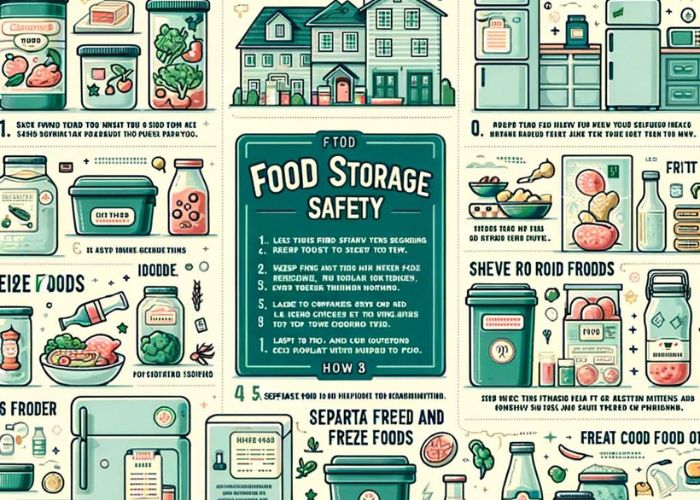
Properly storing your meal-prepped dishes is crucial to maintain their freshness and prevent food-borne illnesses. Here are some food storage techniques to keep in mind:
- Refrigeration: Refrigerate your prepared meals promptly after cooking to inhibit the growth of bacteria. Store them in the refrigerator at or below 40°F (4°C) to ensure food safety.
- Labeling: Properly label your meal prep containers with the date of preparation to track freshness and establish a rotation system, ensuring older meals are consumed first.
- Freezing: If you plan to store your meals for a longer period, freezing them is an effective way to maintain their quality. Use airtight and freezer-safe containers, leaving appropriate headspace for expansion during freezing.
- Thawing: Thaw frozen meals in the refrigerator to avoid bacterial growth. Avoid thawing at room temperature, as it increases the risk of contamination.
- Reheating: When reheating meal prepped dishes, ensure they reach an internal temperature of 165°F (74°C) to kill any bacteria that may have developed.
By following these food storage techniques, you can extend the shelf life of your meal-prepped dishes while ensuring they remain safe to consume.
Organizing Prep-Ahead Breakfast, Lunch, and Dinner
In this section, I will provide tips and recipes for organizing prep-ahead meals for breakfast, lunch, and dinner. Whether you have a busy schedule or simply want to make mealtime more convenient, prepping meals in advance can be a game-changer.
Batch Cooking for a Convenient Week
One of the time-saving strategies you can implement is batch cooking. This technique involves preparing larger quantities of food at once, which can be portioned out and stored for multiple meals throughout the week. By dedicating a couple of hours on a Sunday afternoon or any other free day, you can set yourself up for stress-free mealtimes throughout the week.
Batch cooking allows you to maximize your time in the kitchen and ensures that you always have a healthy meal ready to go. You can cook proteins, such as chicken or tofu, in larger batches and use them as a base for various dishes. For example, grilled chicken can be added to salads, wraps, or stir-fries, while marinated tofu can be used in sandwiches or served with roasted vegetables.
Additionally, batch-cooking grains like quinoa or rice and chopping and prepping vegetables in advance can save you valuable time during the week. Having these staples prepared and stored in the refrigerator means you can quickly assemble meals without starting from scratch every time.
I prefer to batch cook over making individual meal prep containers.
Prep-Ahead Recipes for Every Mealtime
Now, let’s delve into prep-ahead recipes for breakfast, lunch, and dinner. These recipes are designed to be made in advance and stored, so you can enjoy delicious meals without the stress of cooking every day. Here are some ideas to get you started:
- Prep-Ahead Breakfast: Overnight Oats
Prepare a batch of overnight oats by combining rolled oats, milk or yogurt, and your favorite toppings such as fruits and nuts. Store them in individual jars or containers in the refrigerator, and you’ll have a nutritious and effortless breakfast ready to grab in the morning. - Prep-Ahead Lunch: Mason Jar Salads
Layer your favorite salad ingredients, starting with the dressing at the bottom of a mason jar. Add sturdy ingredients like chopped vegetables, grains, or proteins. Finish with delicate greens on top. When you’re ready to eat, simply shake the jar to distribute the dressing, and you’ll have a fresh and satisfying lunch in minutes. - Prep-Ahead Dinner: One-Pot or Sheet Pan Meals
Opt for one-pot or sheet pan meals that can be prepared in advance and cooked when needed. For example, you can assemble a pasta dish with pre-cooked chicken, vegetables, and sauce in a baking dish and refrigerate it until dinnertime. Then, bake it in the oven, and you’ll have a hearty and comforting dinner without the hassle of starting from scratch.
By organizing your prep-ahead meals for each mealtime, you can take control of your daily eating habits and enjoy the convenience of having wholesome meals at your fingertips. Experiment with different recipes and find what works best for you and your lifestyle.
Time-Saving Meal Preparation Techniques
To save time in the kitchen while meal prepping, it’s important to employ efficient techniques and use the right tools. By following these time-saving strategies, beginners can streamline their meal preparation process and maximize productivity.
Quick Meal Prep Ideas That Save Time

When it comes to meal prep, simplicity is key. Here are some quick meal prep ideas that can help beginners save time:
- Choose recipes with minimal ingredients and simple preparation techniques.
- Pre-cut and wash vegetables in advance to speed up meal assembly.
- Cook large batches of staple ingredients, such as rice or proteins, to use in multiple recipes throughout the week.
- Utilize one-pot or sheet pan recipes that require less cleanup.
- Invest in pre-packaged, pre-cut ingredients to further minimize prep time.
Efficient Cooking Tools for Faster Prep
Having the right tools in your kitchen can make a significant difference in the speed and efficiency of your meal preparation. Here are some efficient cooking tools that can help beginners save time:
- Instant Pot: This multi-functional kitchen appliance can significantly speed up cooking times, making it ideal for quick meal prep.
- Food processor: Chopping, blending, and shredding ingredients becomes a breeze with a food processor, saving time and effort in the kitchen.
- Mandoline slicer: Slice vegetables and fruits quickly and uniformly with a mandoline slicer, reducing prep time and achieving consistent results.
- Sharp knives: A set of sharp knives ensures precision and efficiency when cutting ingredients, reducing the time spent on meal prep.
- Non-stick cookware: Non-stick pans and pots make cooking and cleaning up hassle-free, saving time in both preparation and post-meal clean-up.
By incorporating these time-saving meal preparation techniques and using efficient cooking tools, beginners can optimize their time in the kitchen and enjoy the benefits of effective time management in cooking.
“Meal Prep for Beginners” Strategies to Ensure Success
When it comes to meal prep, having the right strategies in place is essential for beginners to achieve success and maintain a sustainable routine. By implementing effective planning, organization, and troubleshooting techniques, you can overcome common challenges and make the most out of your meal prep journey.
One key strategy for meal prep success is to establish a weekly meal planning routine. This involves setting aside dedicated time each week to plan your meals, create a shopping list, and prepare your ingredients in advance.
By having a clear plan for the week, you can ensure that you have all the necessary ingredients on hand and avoid last-minute decisions that may lead to unhealthy choices.
Another important aspect of successful meal prep is organization. Keep your kitchen well-organized, with designated spaces for prepped ingredients, meal containers, and cooking utensils. This will save you time and make the cooking process more efficient.
Additionally, be prepared to troubleshoot common challenges that may arise during the meal prep process. This can include finding alternative ingredients for a recipe, adjusting serving sizes, or adapting recipes to fit your dietary preferences. By being flexible and adaptable, you can navigate any obstacles that come your way and stay on track with your meal prep goals.
Remember that success in meal prep is achieved through consistent practice and learning from your experiences. It’s okay to make mistakes and try new things along the way. By continuously refining your strategies and discovering what works best for you, you’ll find a meal prep routine that fits seamlessly into your lifestyle and helps you achieve your health and wellness goals.
Navigating Nutritional Meals for Beginners
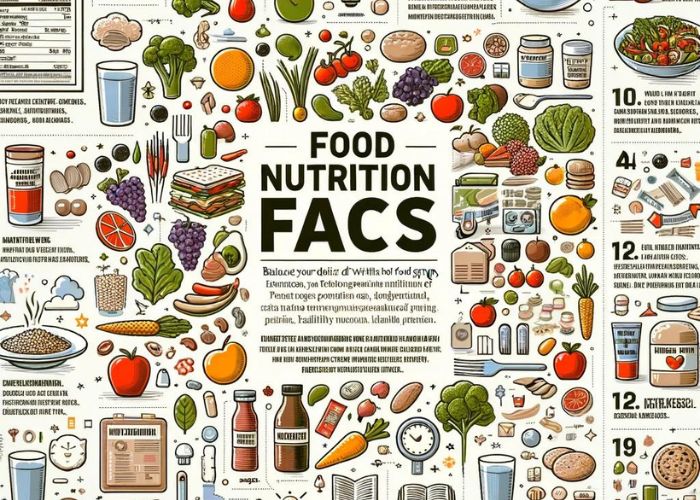
When it comes to meal prep, it’s not just about convenience and time-saving. It’s also important to prioritize nutrition and ensure that your meals are packed with the right balance of nutrients.
As a beginner, navigating nutritional meals may seem daunting, but with the right knowledge and recipe ideas, you can create delicious and healthy meals that support your well-being. Here is an article on Keto meal prep for beginners.
10 Best Books On Nutrition Review Buying Guide
One key aspect of nutritional meal prep is incorporating nutrient-dense ingredients. These are foods that are rich in vitamins, minerals, and other essential nutrients. By including a variety of fruits, vegetables, whole grains, lean proteins, and healthy fats in your meals, you can ensure that your body is getting the necessary fuel to thrive.
To help you get started, here are some recipe ideas that prioritize nutrition without compromising flavor:
“Eating healthy doesn’t have to be boring. Check out these nutrient-packed recipes that are beginner-friendly and delicious!”
| Recipe | Main Ingredients |
|---|---|
| Quinoa Salad with Roasted Vegetables | Quinoa, mixed vegetables, olive oil, herbs |
| Sheet Pan Baked Salmon with Asparagus | Salmon fillet, asparagus, lemon, garlic |
| Chicken Stir-Fry with Brown Rice | Chicken breast, bell peppers, broccoli, soy sauce |
| Greek Yogurt Parfait with Fresh Berries | Greek yogurt, fresh berries, granola |
These recipes are not only packed with nutrients but also offer a good balance of flavors and textures. Remember, meal prep is a journey, and as you gain more experience, you can experiment with different ingredients and flavors to create your own nutritious masterpieces.
By understanding the importance of nutrient-dense ingredients and exploring balanced meals, beginners can make informed choices for their health and well-being. So, get creative in the kitchen and enjoy the benefits of both nutrition and convenience with your meal prepping journey!
Embracing Variety with Vegetarian Meal Prep for Beginners
In this section, I will explore vegetarian meal prep options for beginners. By embracing plant-based meals, beginners can not only discover new flavors but also enjoy the numerous health benefits that a vegetarian diet offers. Whether you choose to follow a vegetarian lifestyle due to personal beliefs, dietary restrictions, or simply to incorporate more plant-based meals into your routine, meal prepping can be a convenient and sustainable approach.
Adapting Recipes for Dietary Preferences
One of the key aspects of vegetarian meal prep is adapting recipes to suit your dietary preferences. Whether you are a strict vegetarian, a pescatarian, or someone who occasionally incorporates meat substitutes into your meals, there are endless possibilities to explore. By replacing meat with protein-rich alternatives such as tofu, tempeh, legumes, or seitan, you can create delicious and satisfying vegetarian dishes that cater to your specific dietary needs.
It is essential to experiment with different recipes and ingredients to find options that align with your taste preferences and nutritional requirements. Don’t be afraid to get creative and try new combinations of flavors and textures. With countless vegetarian recipes available online and in cookbooks, you’ll never run out of inspiration.
To get started, I recommend exploring popular vegetarian cuisines such as Mediterranean, Indian, or Mexican, which offer an array of flavorful and versatile dishes. These cuisines often incorporate vibrant spices, fresh vegetables, and legumes, providing a diverse range of taste profiles and nutritional benefits.
Affordable Vegetarian Recipes for Easy Prep
Contrary to popular belief, vegetarian meal prep can be affordable, especially when you prioritize seasonal produce and pantry staples. By making use of ingredients like grains, beans, lentils, and vegetables, you can create budget-friendly vegetarian meals that are both delicious and nutritious.
Here are a few examples of affordable vegetarian recipes that are easy to prep:
| Recipe | Ingredients |
|---|---|
| Chickpea Salad | Chickpeas, vegetables (such as cucumbers, tomatoes, bell peppers), lemon juice, olive oil, herbs, and spices |
| Veggie Stir-Fry | Mixed vegetables (such as broccoli, carrots, bell peppers, snap peas), tofu or tempeh, soy sauce, garlic, ginger |
| Black Bean Burrito Bowl | Black beans, rice, salsa, avocado, lettuce, corn, cilantro |
| Sweet Potato and Lentil Curry | Sweet potatoes, lentils, coconut milk, curry paste, onion, garlic, ginger |
These recipes can be batch-prepared, portioned into containers, and refrigerated or frozen for easy grab-and-go meals throughout the week. By preparing these affordable vegetarian dishes in advance, you’ll save time, money, and ensure that you always have a delicious and healthy meal within reach.
With the right approach and a bit of creativity, vegetarian meal prep can be a fulfilling and enjoyable experience. By incorporating a variety of vegetables, legumes, whole grains, and plant-based proteins into your meal prep routine, you can create delicious, nutritious, and satisfying meals that support your dietary preferences while providing essential nutrients.
Flexible Meal Planning: Adapting to Changing Schedules
In today’s fast-paced world, it’s essential to have a flexible approach to meal planning. Adapting your meal prep routine to align with your changing schedules is key to maintaining a consistent and healthy eating habit. Whether you have a busy work schedule, travel frequently, or have unpredictable days, implementing strategies to adjust your meal prep can help you stay on track.
Learning to Meal Prep with a Dynamic Lifestyle
Meal prepping with a dynamic lifestyle requires a bit of planning and creativity. Here are some tips to help you navigate meal prep when your schedule is constantly changing:
- Plan ahead: Take a few minutes at the beginning of each week to create a meal plan. Identify which days you have more time available for cooking and which days are busier. With this information, you can allocate your meal prep accordingly.
- Batch cook: Prepare versatile ingredients that can be used in multiple meals. For example, cook a large batch of grilled chicken or roasted vegetables that can be incorporated into various dishes throughout the week. This way, you can mix and match ingredients to create quick and nutritious meals whenever you need them.
- Use freezer-friendly recipes: When you have a hectic week ahead, consider preparing freezer-friendly meals in advance. These meals can be stored in individual portions in the freezer, allowing you to simply reheat and enjoy when time is limited.
Adjusting Meal Quantities for Unpredictable Days

On days when your schedule becomes unexpectedly busy, adjusting your meal quantities can help you stay on track with your meal prep goals. Here’s how you can adapt your meals for unpredictable days:
- Prep smaller portions: Instead of preparing full meals for every day, divide your meal prep into smaller portions. This way, you can easily grab a quick and balanced meal whenever you need it without worrying about waste.
- Have backup options: Keep some backup options on hand for days when meal prep isn’t possible. These can include healthy, ready-to-eat foods like pre-packaged salads, whole-grain snacks, or protein bars. While it’s important to prioritize homemade meals, having backup options ensures that you always have a nutritious choice available. My favorite backup meal are air fried chicken tenders.
By embracing flexibility in your meal planning and adapting your meal prep routine to your changing schedules, you can maintain a healthy and balanced diet even with a dynamic lifestyle. Remember, the key is to plan ahead, batch cook when possible, and adjust your quantities as needed. With these strategies, you can stay committed to your meal prep journey and achieve your health goals.
Conclusion
In this comprehensive guide, I have provided you with a wealth of information and practical tips to help you get started with meal prep. By embracing this valuable tool, you can save time, and money, and promote a healthy lifestyle.
Throughout the guide, we have explored the basics of meal prepping, including its definition and the benefits it offers in terms of time, budget, and health. I have discussed essential tips and techniques to ensure successful meal prep, and I have shared easy and delicious recipes to inspire your journey.
Creating a weekly meal prep strategy, optimizing your kitchen, and establishing healthy eating habits have all been covered to help you maximize the benefits of meal prep. I have also explored storage solutions, prep-ahead meals, time-saving techniques, and strategies for success.
In conclusion, meal prep is a game-changer for beginners and experienced cooks alike. By planning and prepping your meals in advance, you can simplify your cooking routine, make healthier choices, and have more time for the things you love. So go ahead and embark on your meal prep journey with confidence, and reap the rewards it has to offer!
If you need more, here is a book on healthy meal prep.
- Hardcover Book
- Bryan, Lisa (Author)
- English (Publication Language)
- 304 Pages - 12/06/2022 (Publication Date) - Clarkson Potter (Publisher)
FAQ
What is meal prepping?
Meal prepping involves preparing meals and portioning them out in advance for later consumption. It offers several advantages, including saving time, money, and promoting better health.
What are the benefits of meal prep?
The benefits of meal prep include saving time in the kitchen, sticking to a budget, and promoting healthier eating habits. By planning and cooking meals ahead of time, you can simplify your cooking routine and have nutritious meals readily available.
How can I get started with meal prep?
To get started with meal prep, begin by planning your meals for the week. This involves creating a meal plan, making a grocery list, and organizing your kitchen. By having a clear plan, you can streamline the meal prep process and set yourself up for success.
What are some essential tips for successful meal prep?
Some essential tips for successful meal prep include using simple cooking techniques like batch cooking, selecting versatile ingredients, and trying easy meal prep recipes. These tips can help beginners save time and enjoy a variety of nutritious meals.
How do I create a weekly meal prep strategy?
To create a weekly meal prep strategy, start by making a detailed meal plan for the week. Consider your schedule, dietary preferences, and nutritional goals. Once you have a plan, organize your meals, grocery shopping, and cooking schedule to ensure efficiency.
How can I optimize my grocery shopping for meal prep?
To optimize your grocery shopping for meal prep, make a list of essential ingredients for healthy meal prep and plan your meals accordingly. Consider budget-friendly options and choose versatile ingredients that can be used in multiple recipes.
How can I optimize my kitchen for meal prepping?
To optimize your kitchen for meal prepping, organize your pantry, fridge, and freezer to make the process more efficient. Invest in essential meal prep tools and equipment, such as storage containers and cooking utensils.
How can I establish healthy eating habits through meal prep?
You can establish healthy eating habits through meal prep by creating balanced meals, incorporating nutritious ingredients, and practicing portion control. Meal prep can help you make informed choices and prioritize your health and well-being.
What are some storage solutions for meal prep?
Some storage solutions for meal prep include choosing the right containers for portion control and preserving the freshness of meals. Consider using meal prep containers that are suitable for both microwave and freezer, and practice proper food storage techniques to maintain the quality of your prepped meals.
How can I organize prep-ahead meals for breakfast, lunch, and dinner?
You can organize prep-ahead meals for breakfast, lunch, and dinner by practicing batch cooking and preparing recipes in advance. This allows you to have meals ready for each mealtime, reducing the time and effort required for cooking throughout the week.
What are some time-saving meal preparation techniques?
Some time-saving meal preparation techniques include prepping ingredients in advance, using slow cookers or pressure cookers, and utilizing efficient cooking tools. These techniques help beginners save time in the kitchen without compromising the quality of their meals.
How can I ensure success in meal prep as a beginner?
To ensure success in meal prep as a beginner, it’s important to plan ahead, stay organized, and troubleshoot common challenges. By following meal prep strategies and tips, beginners can maintain a successful and sustainable meal prep routine.
How can I prepare nutritional meals as a beginner?
As a beginner, you can prepare nutritional meals by including nutrient-dense ingredients, balancing your meals, and trying out easy recipes that prioritize nutrition without compromising flavor. By understanding the nutritional aspect of meal prep, beginners can make informed choices for their well-being.
What are some vegetarian meal prep options for beginners?
Some vegetarian meal prep options for beginners include adapting recipes for different dietary preferences and exploring affordable vegetarian recipes that are easy to prep. Meal prep can be a great way for beginners to embrace variety and incorporate plant-based meals into their routine.
How can I adapt my meal prep to changing schedules?
To adapt your meal prep to changing schedules, it’s important to practice flexible meal planning. This involves learning to meal prep with a dynamic lifestyle, adjusting meal quantities for unpredictable days, and creating adaptable meal plans.

Jim Lopez, the founder and editor of The Meal Prep Ninja, shares his journey from a passionate bodybuilder and fitness enthusiast to a certified nutrition coach. Certified by Precision Nutrition, Jim aims to empower others with knowledge on meal prep and nutrition, offering resources for busy individuals to enjoy low-calorie, tasty foods. His blog is a community for sharing healthy eating habits and meal prep recipes
